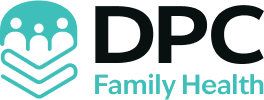Are traditional medical models leaving aging parents with unmet health needs? Direct Primary Care offers a different approach by fostering consistent care and clear communication between providers and families. This model focuses on proactive check-ups and easily accessible consultations, addressing concerns that may otherwise be overlooked. With each visit structured around understanding and managing chronic conditions, DPC provides a practical and streamlined solution for maintaining seniors’ health. It sets the stage for families to gain confidence in managing long-term wellness while keeping care straightforward and focused.
DPC Advantages for Helping Aging Parents Stay Healthy with DPC
Direct Primary Care offers extended appointment times that allow physicians to focus on both immediate and long-term needs. With extra time, providers can review detailed electronic health records and caregiver toolkits. This focused approach improves the detection of subtle symptoms and supports more accurate diagnosis, especially in managing chronic illnesses such as heart and lung conditions.
DPC minimizes wait times and administrative delays by replacing traditional insurance processes with streamlined interactions. This model facilitates frequent, proactive checkups. Providers monitor health trends closely and adjust care plans promptly. The emphasis on regular evaluations contributes to robust chronic disease management and effective preventive care, creating a system that prioritizes early intervention.
The benefits of DPC extend to improved relationships and communication between caregivers and physicians. Extended time during consultations cultivates a trusting environment where questions are addressed thoroughly. This responsive system supports efficient care coordination while reducing bureaucratic challenges.
- Improved doctor-patient relationships
- Proactive symptom management
- Reduced administrative delays
- Better continuity of care
- Enhanced communication between caregivers and providers
By shortening the gap between symptom recognition and treatment, DPC bridges potential care gaps. The focused care environment ensures that aging parents receive personalized attention tailored to their evolving health needs. This collaborative model ultimately delivers more consistent, compassionate, and effective healthcare for families managing elder care.
Enhancing Physician Communication in DPC for Aging Parents

Direct Primary Care promotes open discussions by reviewing detailed electronic health records, including past diagnoses and current medications. Recognizable symptoms such as broken bones from falls and lightheadedness are highlighted for prompt evaluation. This process not only improves clarity between caregivers and physicians but also supports timely intervention when signs of deterioration are evident.
A range of specific techniques can build stronger communication in the DPC model. When discussing health concerns, DPC physicians and caregivers are encouraged to:
- Ask open-ended questions that invite detailed patient input
- Clarify treatment implications to align expectations
- Review and update EHR details during each consultation
These techniques create an environment where transparency leads to trust, ensuring that each conversation meaningfully contributes to effective care.
Focused communication in DPC facilitates personalized treatment for elders while improving primary care accessibility and efficient appointment access. Providers work directly with caregivers to interpret EHR data and adjust care plans, mitigating risks and enhancing overall treatment outcomes. This model nurtures a reliable doctor-patient relationship that ultimately benefits the health and well-being of aging parents.
Final Words
In the action, the blog post explored the DPC model’s role in providing accessible healthcare for aging parents.
It highlighted strategies for monitoring symptoms, extended consultations, and effective caregiver communication.
Each section showcased practical solutions and support networks that improve patient outcomes.
This thoughtful approach reinforces the benefits of Helping Aging Parents Stay Healthy with DPC.
The article leaves readers with positive steps forward and a renewed focus on quality, compassionate care.
FAQ
Q: What are the signs that elderly parents need help?
A: Five key signs include declining personal hygiene, missed medications, confusion with daily tasks, noticeable weight loss, and difficulty with mobility or balance.
Q: How can I get paid for taking care of my elderly parents?
A: Several programs provide compensation including Medicaid’s Cash & Counseling program, Veterans Aid and Attendance benefits, and state-specific initiatives for family caregivers.
Q: What steps should I take to care for aging parents at home?
A: Create a safe home environment, establish a daily routine, maintain medical records, coordinate with healthcare providers, and set up a medication management system.
Q: How do I handle an elderly parent’s anxiety?
A: Maintain regular routines, practice calming activities together, ensure proper medication management, and create a peaceful home environment.
Q: What options exist for elderly parents without financial resources?
A: Programs available include Medicaid, Social Security benefits, Medicare savings programs, and local Area Agency on Aging assistance services.
Q: What is the 40-70 rule for aging parents?
A: The 40-70 rule suggests starting conversations about aging care when you’re around 40 and your parents are around 70 to plan effectively.
Q: How can I manage elderly parents’ care from a distance?
A: Use technology for monitoring, arrange local support services, schedule regular video calls, and coordinate with nearby family members or professional caregivers.
Q: How should I discuss hygiene with elderly parents?
A: Address concerns respectfully during a calm moment, focus on health and safety aspects, and offer practical solutions while maintaining their dignity.

